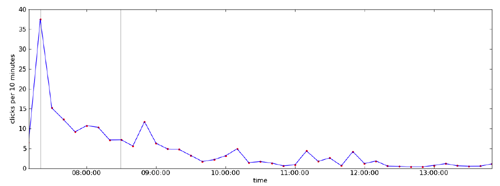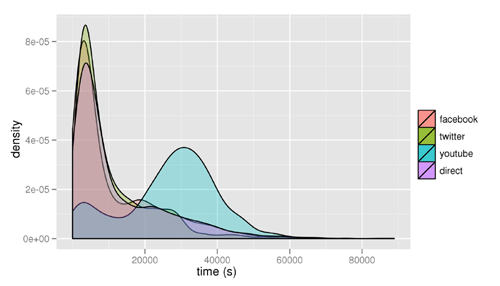How Long Do Links Survive?

 Who would have thought that bit.ly was useful for more than just shortening your URLs?
Who would have thought that bit.ly was useful for more than just shortening your URLs?
The popular link shortener recently released on their blog the findings of a very scientific study that they conducted about the lifespan of shared links.
Their work led them to two major conclusions: timely content has a shorter lifespan than information that can be appreciated at any time, and links posted on Facebook tend to last much longer than Twitter, but both pale in comparison to video-streaming site YouTube.
They started by studying a story titled "Baby otter befriended by orphaned kittens," initially shared by StylistMagazine on Facebook. They evaluated the perserverance of the link by determining it's "half life," which is lifted from a scientific term used to refer to the period of time it takes a decaying substance to decrease by half. For their study, the folks at bit.ly use this term to refer to "the amount of time at which this link will receive half of the clicks it will ever receive after it's reached its peak."
The following graph shows the results of their observations on the life of the link. The half-life of this particular story was 70 minutes, which captures all of the clicks that took place between the gray lines.

Next, they decided to see what the lifespan would be for a link with drastically different content. This time, they went with "East Coast earthquake: 5.8 magnitude epicenter hits Virginia," originally posted by the Washington Post on Twitter.
Like the otter post, the graph for this link showed a pattern of a fast rise and relaxed drop-off. Of course, the amount of traffic coming to this link is much larger than the previous one, as an earthquake story interests more people with more diverse backgrounds than the story about small mammals. However, in studying its existence, bit.ly found that its half-life was only 5 minutes - after just 5 minutes the link had already seen half the clicks it would ever see.

What this data appears to show is that links with content associated with timely events, such as the earthquake, drive traffic much more quickly than content that can be enjoyed at any time. That is why the number of clicks in the initial spike is so much higher in the second graph. However, also because it is timely, interest in the content wanes much more quickly, because it is no longer relevant after a while. That is why the half-life of the earthquake story was so much shorter than that of the otter and kitten link.
The bit.ly people also theorized that it may be more than just the type of content that extends link life, but also where the link is posted.
Their next move was to look at the half-life of another one thousand popular bit.ly-based links. They yielded similar results.
According to their study, the average half-life of a link on Twitter is about 2.8 hours, whereas on Facebook they typically hang on for about 3.2 hours. When it comes to "direct" sources, like email or IM, it's slightly longer still, at 3.4 hours.
"So you can expect, on average, an extra 24 minutes of attention if you post on facebook than if you post on twitter [sic]."
They also noted, however, that there is an exception to this regular pattern: YouTube. Links originating on the Google-owned video-streaming site typically have a half-life of a whopping 7.4 hours, which means that clickers tend to hold their interest in links on YouTube much longer than other social networking sites.
The graph beow shows the distribution of half-lifes for each referring site:

"We'd expect to see link half lifes of less than 20K seconds (5.5 hours) for facebook, twitter [sic] and links shared directly," says bit.ly, on their blog, "And we'd be very surprised to see any link maintain significant traffic for a lot longer than 60K seconds (16 hours)."
They go on to add that they would actually be surprised to see YouTube links with half-lives of anything less than 5 hours.
To finalize their study, they concluded that the half-life of the average bit.ly link is about 3 hours, unless it is published on YouTube, where it will be around seven.
Ultimately, they say "that the lifespan of your link is connected more to what content it points to than on where you post it: on the social web it's all about what you share, not where you share it!"
Well said, bit.ly.









